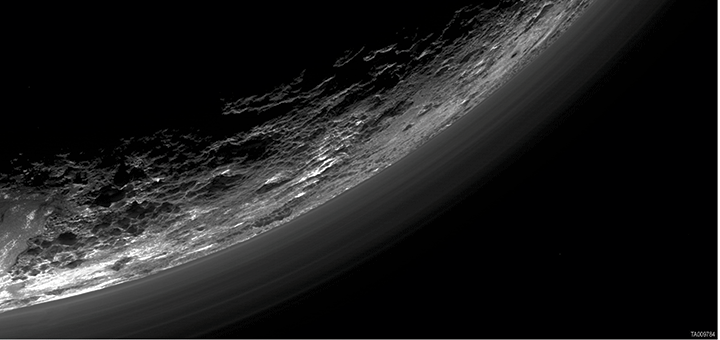Pluto might not be so icy after all: researchers believe there may be liquid water below its surface.

Using data collected by New Horizons when it made the first flyby of the dwarf planet last July, researchers at Brown University concluded that Pluto may have once had — and still could — have water sloshing around its interior.
READ MORE: NASA images show snow-covered mountains on Pluto
If all of Pluto’s water had frozen, they believe that over millions or billions of years, the planet would have shrunk. Planetary scientists would have seen evidence of this shrinkage through the images of Pluto sent by New Horizons. Instead, they believe there is evidence to suggest that the planet has expanded.
In order to keep the water in its liquid state, there would have to be a source of warming, as Pluto is far too distant from the sun — an average of 5.91 billion km — to receive any substantial heating from sunlight (it is part of a collection of icy bodies known as the Kuiper belt that exists beyond the orbit of Neptune). It has a very thin atmosphere to trap that heat.
The researchers suggest that Pluto’s rocky core may have contained radioactive elements, which created enough heat to melt the water contained in the dwarf planet’s shell. Over time, as some of that water began to refreeze, it would expand, much as we see when we put water into an ice cube tray.
The model the team ran found that the low temperatures on Pluto and high pressure within it would cause a change from the ice we are familiar with to something called ice II. This type of ice would take up less volume and cause Pluto to contract.
READ MORE: Meet Mike Brown—Pluto killer and the man who brought us Planet 9
“We don’t see the things on the surface we’d expect if there had been a global contraction,” Hammond said. “So we conclude that ice II has not formed, and therefore that the ocean hasn’t completely frozen.”
The researchers say they don’t know definitively if the ocean is still there: it’s dependent on Pluto’s ice shell. The newer ice II would only form if the shell is 260 km thick. However, they believe that evidence suggests that Pluto’s shell has a thickness of 300 km or more.
“That’s amazing to me,” said Noah Hammond, a graduate student in Brown’s Department of Earth, Environmental and Planetary Sciences, and the study’s lead author. “The possibility that you could have vast liquid water ocean habitats so far from the sun on Pluto — and that the same could also be possible on other Kuiper belt objects as well — is absolutely incredible.”
WATCH: NASA video gives us unique look at surface of Pluto



Comments